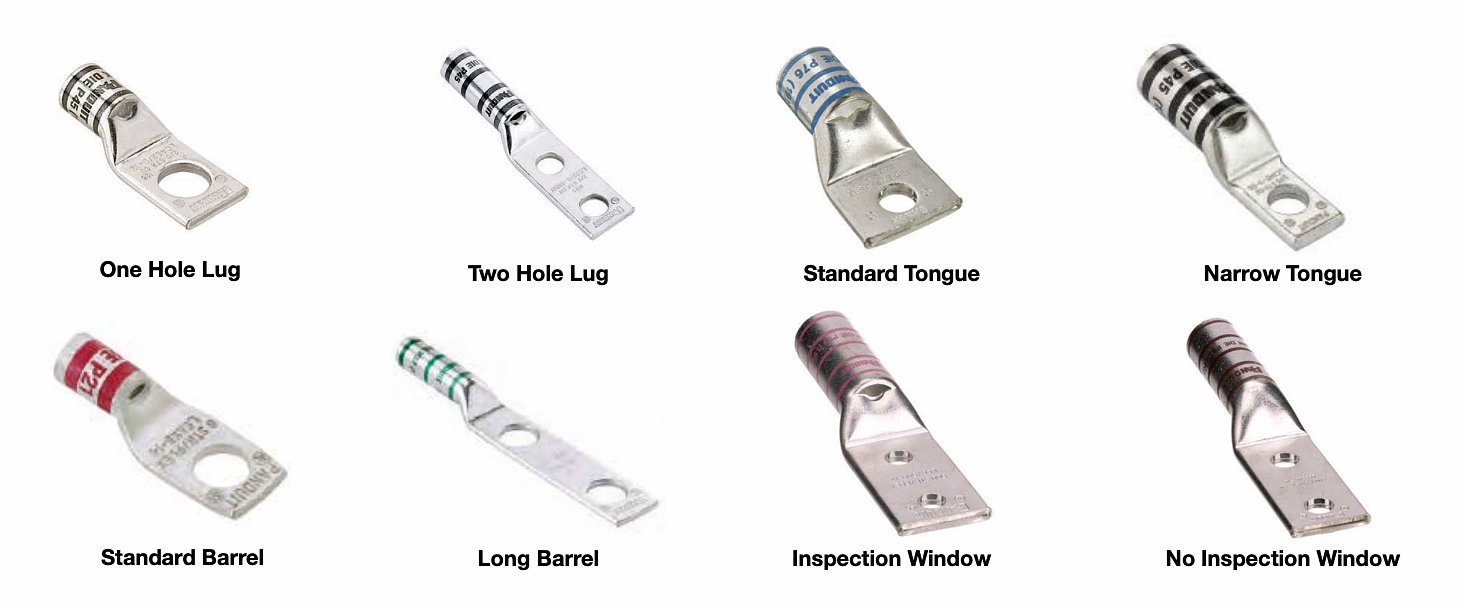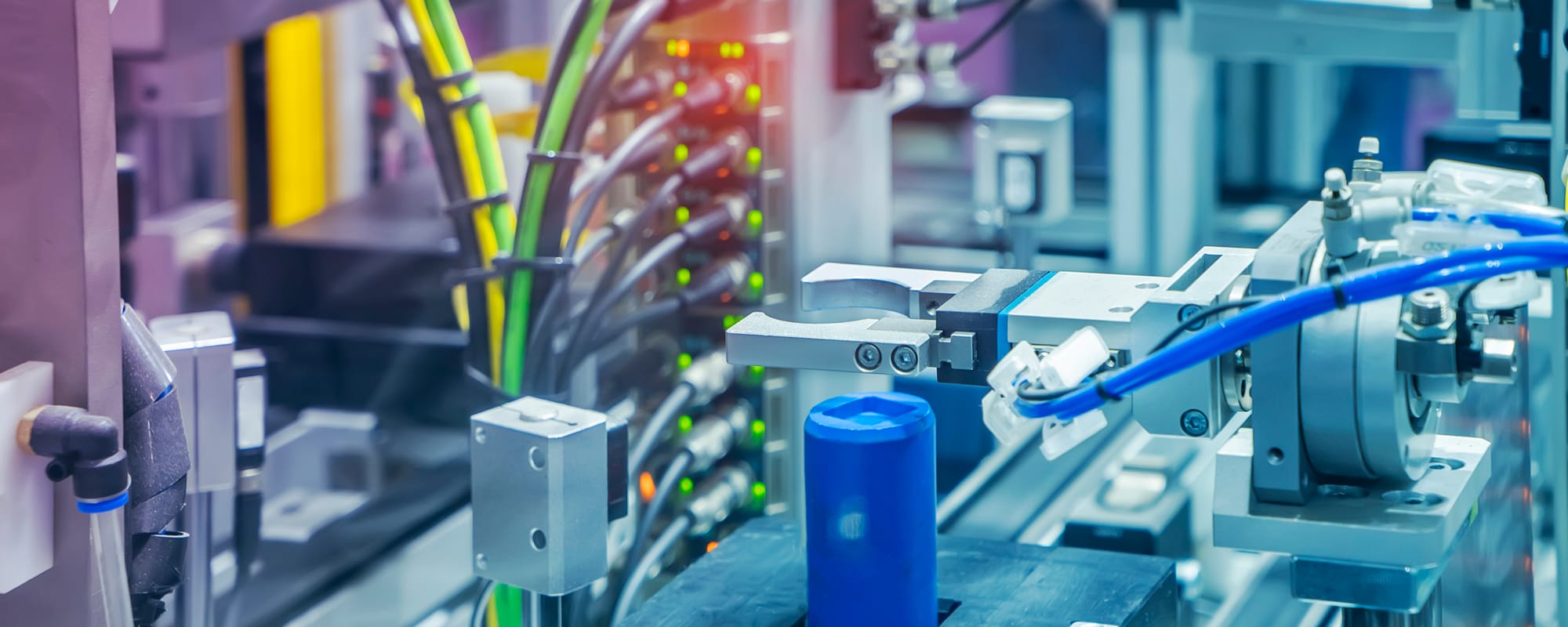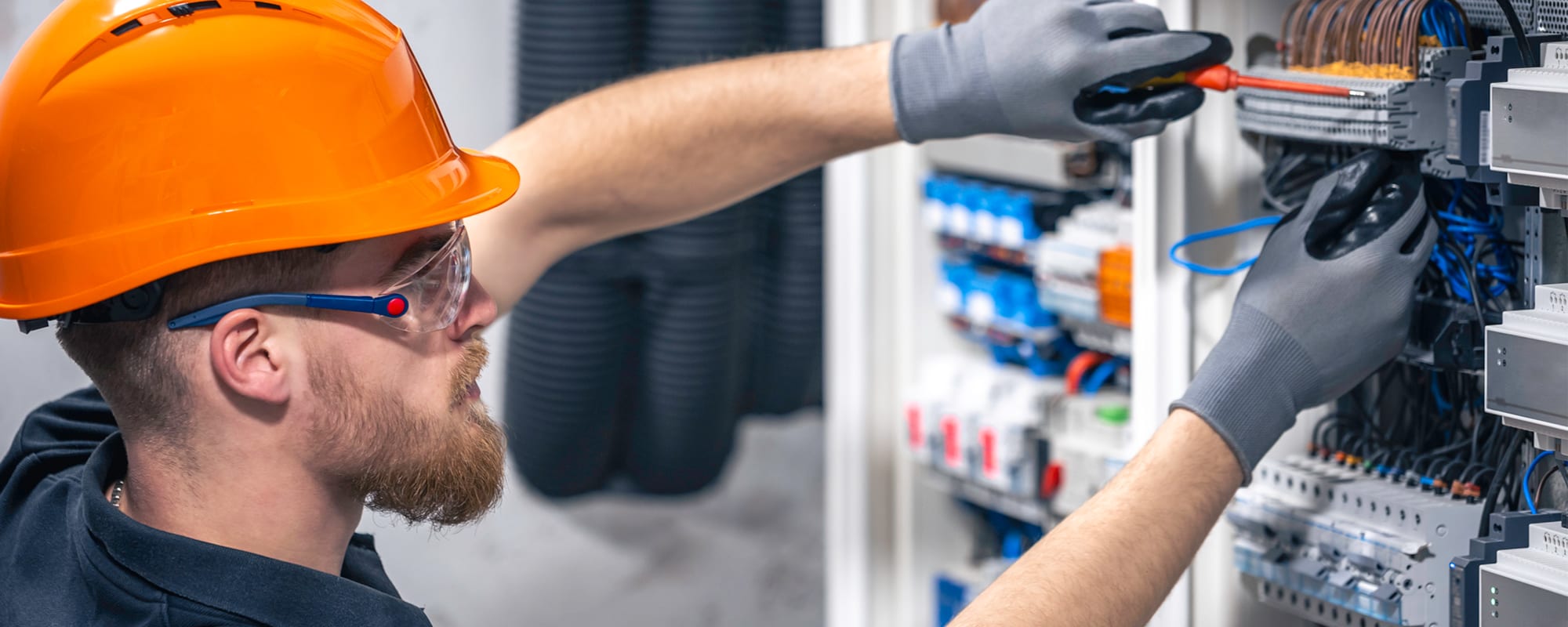From renewable energy to new AI data centers, growing power demands require reliable connections. Learn how to choose the right compression lugs for your application in this interview with Jeff Krosel, Group Products Manager at Panduit.

The electrification and artificial intelligence megatrends are fueling substantial growth in industries like electric vehicles (EVs), manufacturing, and artificial intelligence (AI) data centers. They’re also eliciting soaring demand for electric power, revolutionizing power design, and driving demand for renewable energy utilities. The scale of these industries and transformations is massive, but — at their core — they all rely on comparatively tiny electronic components, particularly power connectors.
We spoke with Jeff Krosel, Group Products Manager at Panduit, a global leader in infrastructure and connectivity solutions, to learn more about the primary drivers of the electric power market, the role power connectors play in its evolution, key considerations for finding the right lug for your needs, and Pan-Lug compression lugs.
Hi Jeff. Please introduce yourself and tell us a little about Panduit.
Thanks so much for having me. I’m excited to speak with you about this topic. I am a group product manager at Panduit, covering our Connect line, which includes power connectors, grounding and bonding products, terminals, and other products.
I’ve been with Panduit for 24 years. The first half of my tenure was more on the engineering side of the business, and the latter half in product management. So, I’ve had a lot of experience throughout the company and had the chance to work across many different business units.
Panduit has been around since the 1950s. We’re a global leader in electrical and network infrastructure, designing and manufacturing products for many different industries, including industrial automation, commercial construction, data centers, renewable energy, telecommunications, and data communications. With thousands of patents to our name, we have a large breadth of products with a focus on quality and safety.
You joined us today to talk about electrification. So, let’s dive in. What should people know?
Electrification is a huge topic right now as many move away from fossil fuels and more toward electric power.
There are two key drivers behind the electrification market right now:
- The significant increase in the demand for power overall. This includes many industries, particularly AI, hyperscale data centers, and the industrial automation sector. There is also a big effort to modernize the power grid.
- The global push toward sustainable energy. While mainly driven by solar and wind farms, we’re seeing more industries and companies prioritizing energy efficiency and carbon reduction goals. Many companies are publicizing their environmental, social, and governance (ESG) goals and actively tracking and working to reduce their carbon footprint.
Commercial and industrial construction is seeing a trend toward electrification, along with utilities upgrades. Additionally, with the emergence of EVs and EV charging stations, a lot of these industries are rethinking how they distribute and manage power.
The combined impact of these drivers is making electrified infrastructure more and more essential, increasing demand for reliable power connections, and impacting roles across the board, ranging from original equipment manufacturers (OEMs) to contractors and facility managers.
What’s one solution that can have an outsized impact on embracing electrification?
If we’re talking about key components that make electrification happen, power connectors are at the top of the list. Every piece of electrified equipment needs a secure and durable connection — and that’s all done through power connectors.
If power connectors fail, there are downtime and safety concerns. Their ultimate purpose is to ensure the reliable flow of power from cables to electrified equipment or ground, but they also play a role in reducing the risk of overheating, corrosion, and other critical failures, like fire. Power connectors can be UL-listed or certified to other standards with stringent performance requirements to further reduce risks.
There are many different types of power connectors, spanning lugs to M12 power connectors and more. The most common type is the lug, which is typically used in power and grounding applications, including power distribution panels, electrical utility substations, and control panels. Lugs are typically larger and designed for higher current applications than M12 connectors, which tend to be smaller, modular, and sealed and are typically used for lower current applications, like industrial sensors. There are different types of lugs, as well, including compression, mechanical, and multi-tap, all of which vary in terms of features and termination style.
For example, compression lugs are installed with various tools to create permanent crimp connections and deliver high-reliability performance. Mechanical lugs are installed with a fastener — typically a screw or bolt — so, they’re not permanent. They are quicker and easier to terminate than compression lugs, making them ideal for applications where future moves or modifications are expected.
When you’re evaluating the type of lug you need, the biggest consideration is usually the type of equipment you’re connecting to. You will need to factor whether it’s for grounding or directly connected to electrical equipment, if it’s a permanent or short-term installation, and the type, material, and diameter of the cable you’re using.
The type of cable you’re using is going to determine a lot. If you’re using an aluminum cable, you’ll need an aluminum lug. Same with copper. However, there are bimetallic lugs available for applications with two different variants in material, such as an aluminum cable that needs to connect to copper, such as a copper busbar. Some lugs may also be dual rated, which can be safe for both copper and aluminum conductors.
There are also lugs with multiple ports, such as multi-taps, that allow you to connect more cables at a particular junction.
Please introduce us to Panduit’s power connectors.
Panduit has been in the power connector business for decades, so we have deep knowledge of the power electronics industry and its many applications. Other things that set us apart include:
- Engineering expertise. We offer top-notch engineers who understand the standards, components, and tools incredibly well.
- High-quality material. When you use quality components for a connection, the output is also going to be high-quality.
- Certifications. We carry the certifications and meet the safety standards that are important to customers who need to meet their own requirements.
- Broad portfolio offerings. In addition to the vast types of lugs we offer, we also manufacture mechanical and electrical splices, split bolts, and different grounding options to cover the full gamut of power electronic customer needs.
Another thing that makes Panduit stand out is that we offer lugs that meet the Network Equipment Building System (NEBS) Level 3 certification, a Telcordia test standard that goes above and beyond your standard UL requirements for more extreme conditions. This is important when you need solutions for a harsh environment, like a solar panel farm in the desert. We’re one of the first manufacturers to have our lugs tested and approved, so this really sets us apart from the rest of the market.
Our Pan-Lug copper compression lug line is our largest selection in this realm. It offers a lot of options, including copper, aluminum, and bi-metallic lugs with one- and two-hole variants, different hole diameters, and different spacing between holes. This line also offers standard and narrow width tongues, which are the flat portion that helps with securing the lug to a terminal, stud, or busbar. Narrow-width tongues are often used for higher-density applications, like when you’re trying to get as many lugs on a busbar as possible or somewhere they can’t have a wider turn. We also offer lugs with and without inspection windows that allow users to verify that the cable is fully inserted before they crimp. Other options include different barrel lengths, where the lug is crimped onto the cable itself, and the option of straight, 90°, and 45° angles for most solutions in the Pan-Lug line.

For example, the one-hole AWG variants in our Pan-Lug line include LCA Series lugs with standard barrels, tongues, and cables and an inspection window, our LCAN Series lugs with standard barrels and cables, narrow tongues, and an inspection window, and our LCAF Series lugs with standard barrels and tongues, flex cable, and an inspection window. The line also offers a number of one-hole metric lugs, like our LCMA Series, two-hole AWG lugs, like our LCD Series, and two-hole metric lugs, like our LCMD and LCMC Series.
Another differentiating feature of our Pan-Lug line is that we mark where the crimps should be placed and how many are needed (see image below). We also note which size die is needed for the crimping tool — and not only for our own tools but for some of our competitors’ as well, so contractors aren’t stuck using one brand if they don’t want to. Additionally, our lugs are tin-plated, which helps fight against corrosion over time and makes the connections more reliable.

Our Pan-Lugs can span a broad range of application areas because they’re designed to be used wherever you’re bringing power in to connect to something. For example, lugs are commonly used in control panels, solar and wind farms, and data centers. Datacenters use lugs in both gray space — the construction and where you bring power into the building — and white space, where you have data halls and racks loaded with servers and switches. All the active elements in those cabinets and racks have to be grounded, which is typically done with a two-hole lug.
This line is also still expanding. UL recently updated its standards and no longer classifies lugs that were manually bent in the field as UL compliant. As such, lugs must now be manufactured with an angle. So, we’ve been working to expand our Pan-Lug bent lug offering and will continue to do so.
What other components are needed when ensuring a reliable power connection?
In addition to lugs, you need to consider the tool you’ll use to make the connection — a crimping tool.
Panduit offers a portfolio of crimping tools as well; so, we’re a one-stop-shop. If you have a lower volume application, you could choose a battery power tool or a manual crimper. If you’re working in a higher volume environment, like a large industrial manufacturing facility, you’ll likely want to use a benchtop or hydraulic tool.
We’ve also partnered with Milwaukee Tool, a popular and trusted tool brand, to give our customers even more options when it comes to using our lugs. The difference between UL certified, which means that your individual components have been tested and proven compliant, and UL listed, which means that a specific combination of tool, die, and lug have been tested and proven to meet the relevant standards, is huge, and our partnership with Milwaukee Tool makes Panduit the only lug manufacturer in the world that can deliver a UL-listed crimp with a Milwaukee crimp tool.
Do you have a brief success story to share?
Panduit works with a customer in the battery energy storage system (BESS) industry who runs a high-volume operation and is especially busy given the significant growth in the BESS field. They came to us looking for a simpler, quicker solution for crimping cables that need multiple crimps for UL listing. They were having to do multiple crimps on a given element, and it was slowing down the operation. So, they needed a solution that could provide the same strong power connection but faster.
We designed a brand new die that allows them to achieve the same strong connection with a single UL-listed crimp. This benefited the customer by speeding up their operations. It also benefitted Panduit. As their throughput increased, we saw an uptick in lug orders. So, the solution was a success for all involved.
Power the future of your facility with electrical power connectors from Panduit and RS
Panduit’s offers its extensive range of connectivity solutions — ranging from lugs, terminal blocks and strips, busbars, grounding connectors, and communication connectors to cable assemblies, labeling, and management and tools — through RS to provide customers with quick and easy access to the products, support, and services they need to electrify their systems. RS also offers a wide variety of other Panduit products, including other electronic components, test and measurement and facility safety and security solutions, and cabinet, rack, and enclosure parts and accessories.
For more information about Panduit’s Pan-Lug compression lugs for electrification applications, visit the links embedded throughout this article and check out its “Power connectors product selection guide.” For assistance identifying, procuring, and maintaining these and other Panduit solutions, please contact your local RS representative at 1.866.433.5722 or reach out to the RS technical support team.







